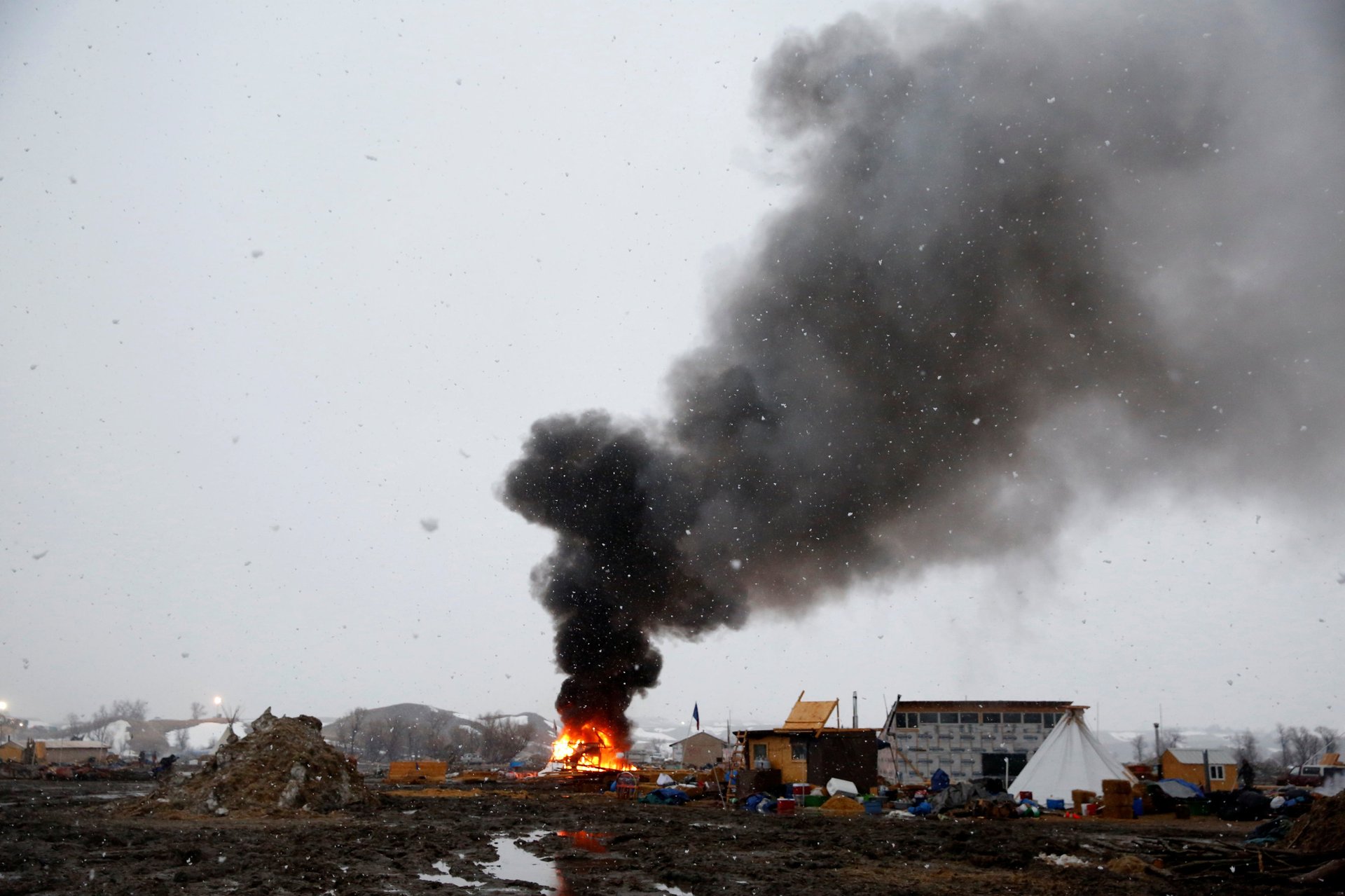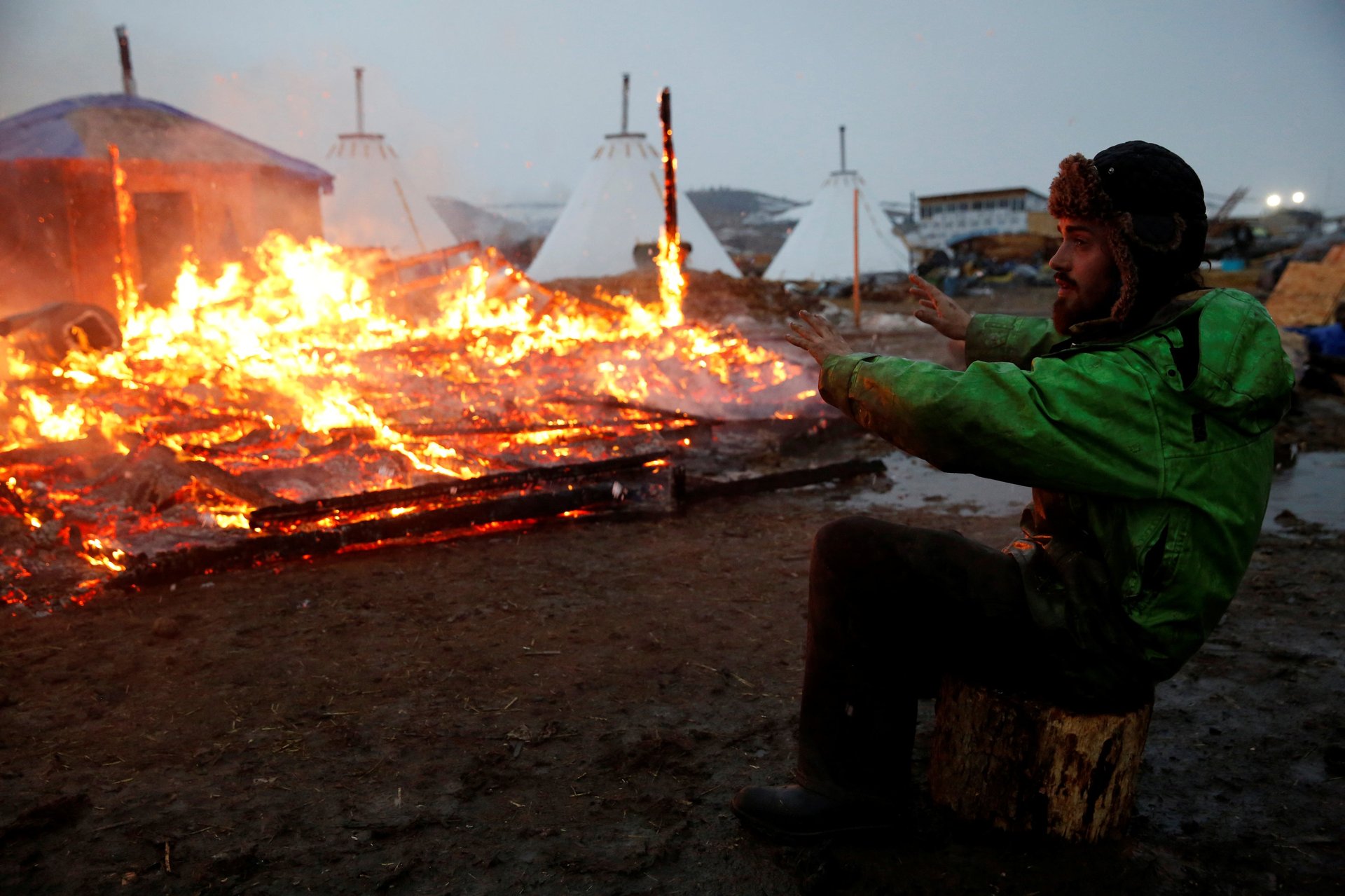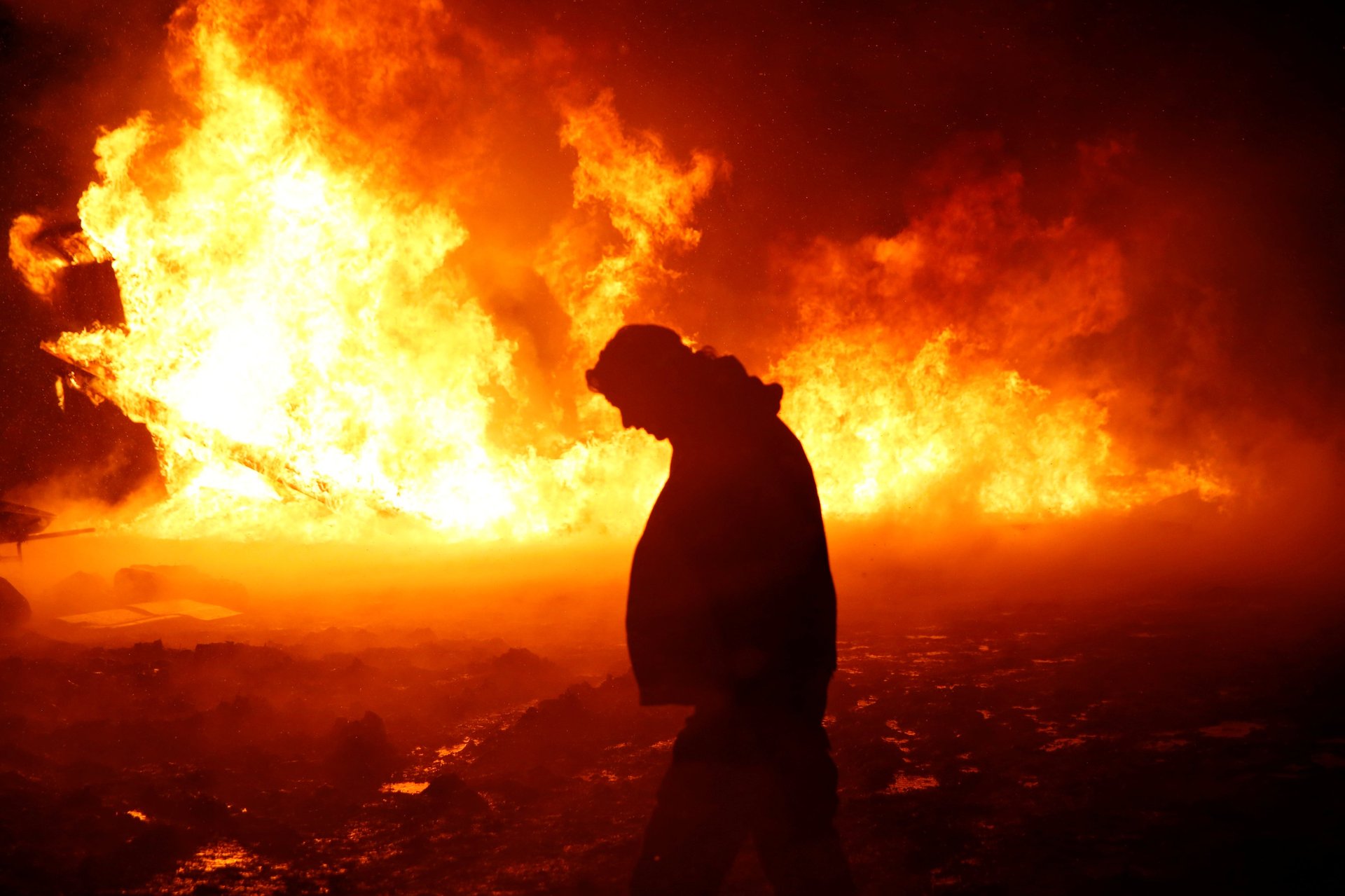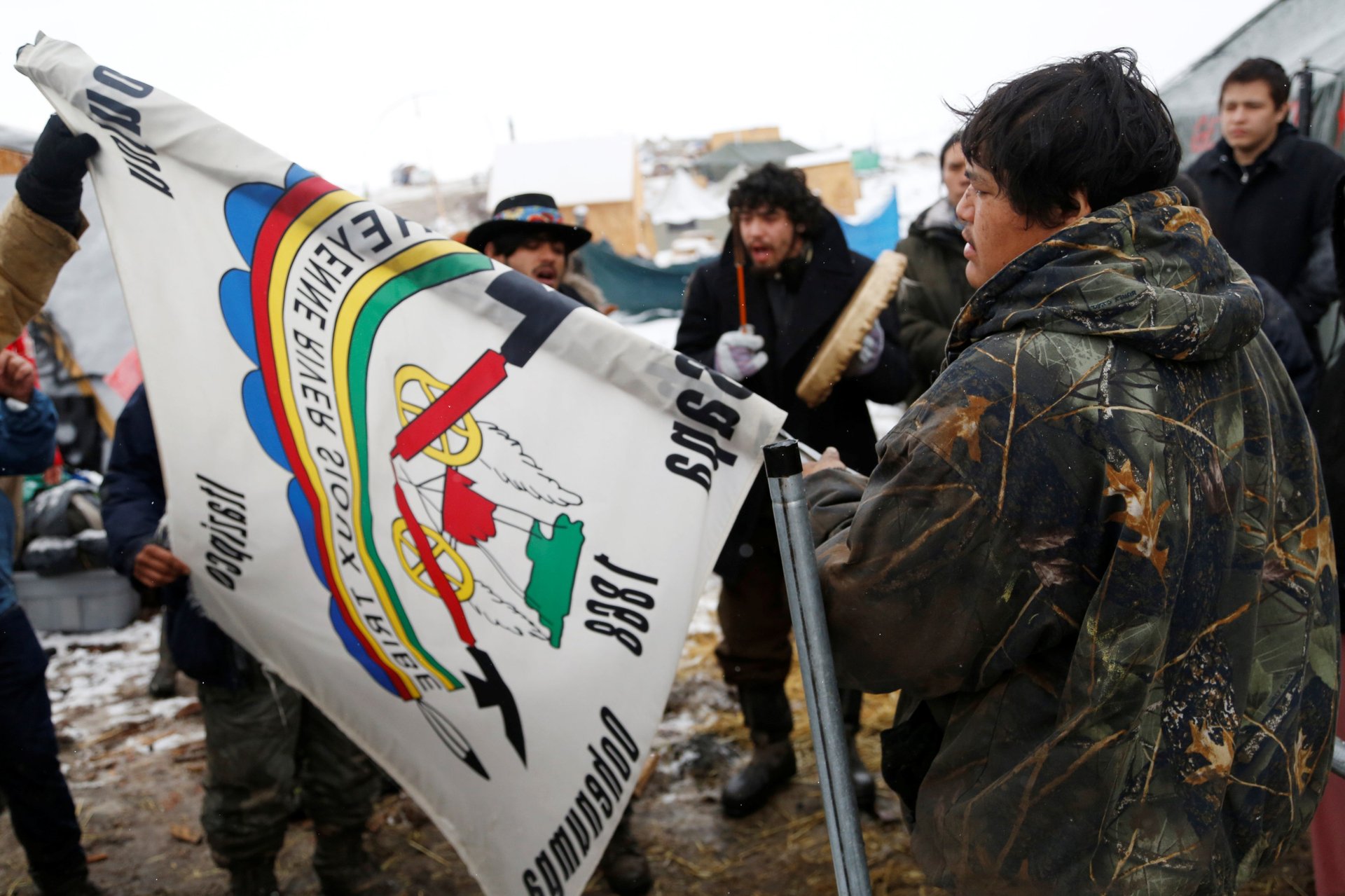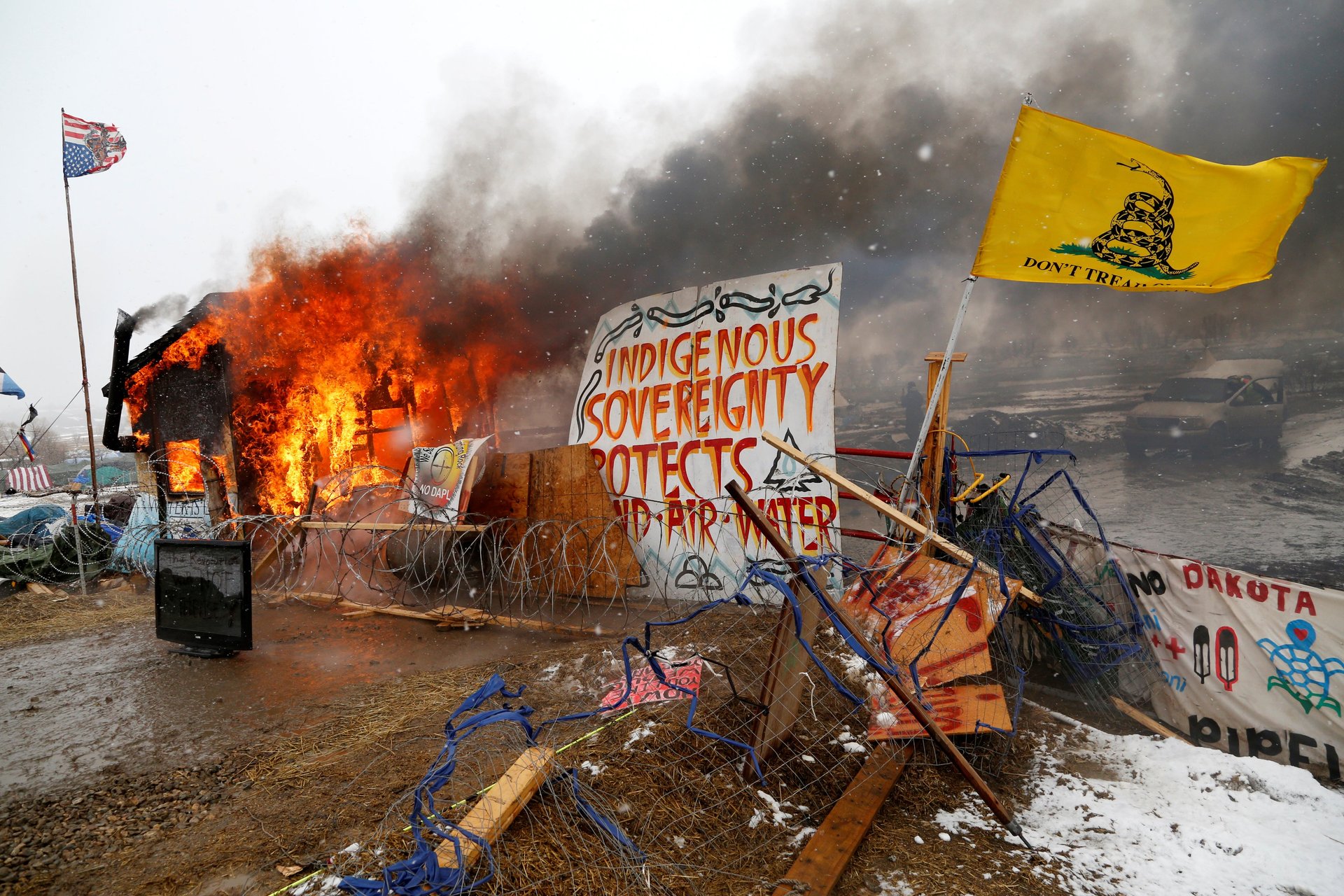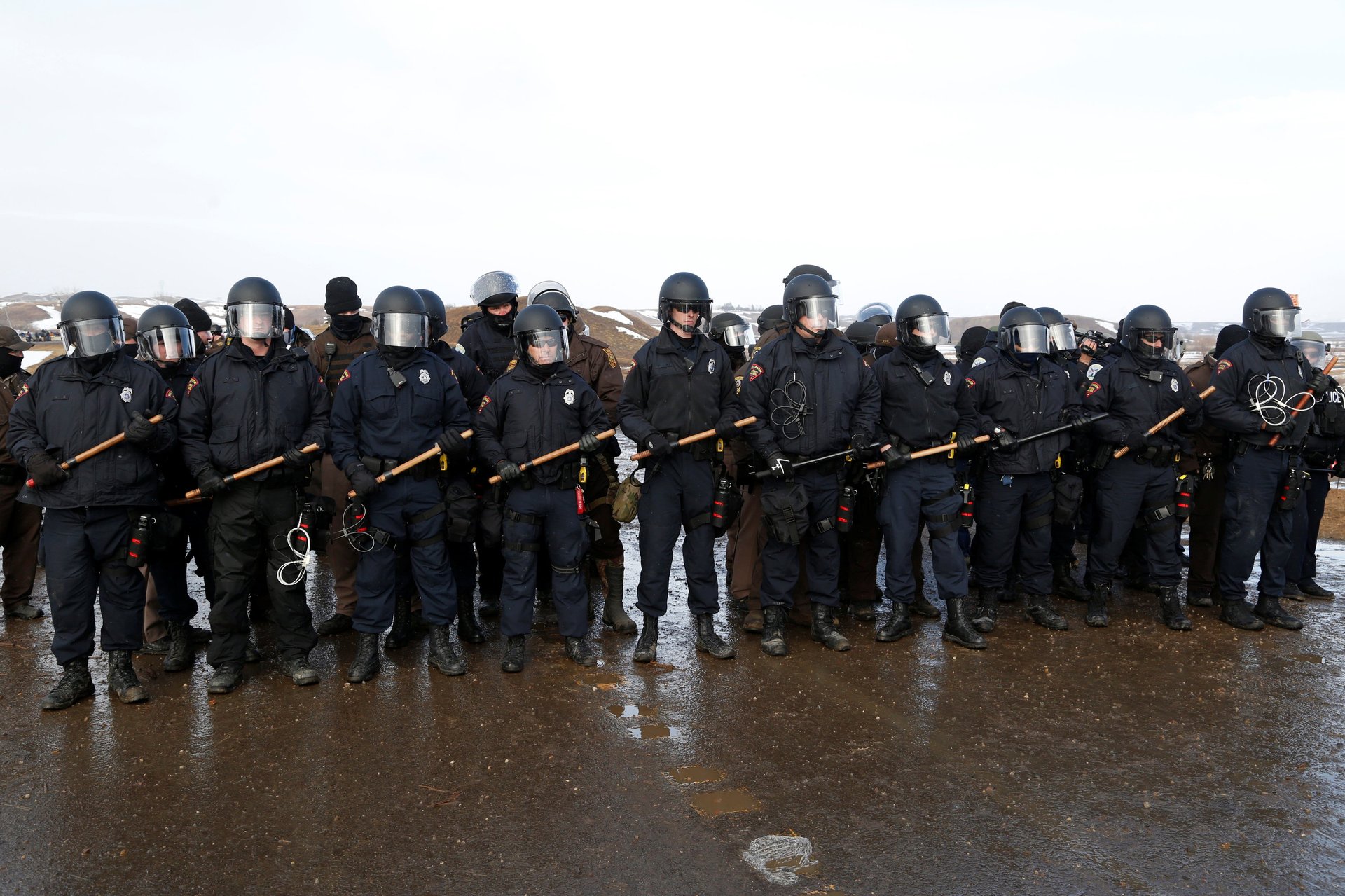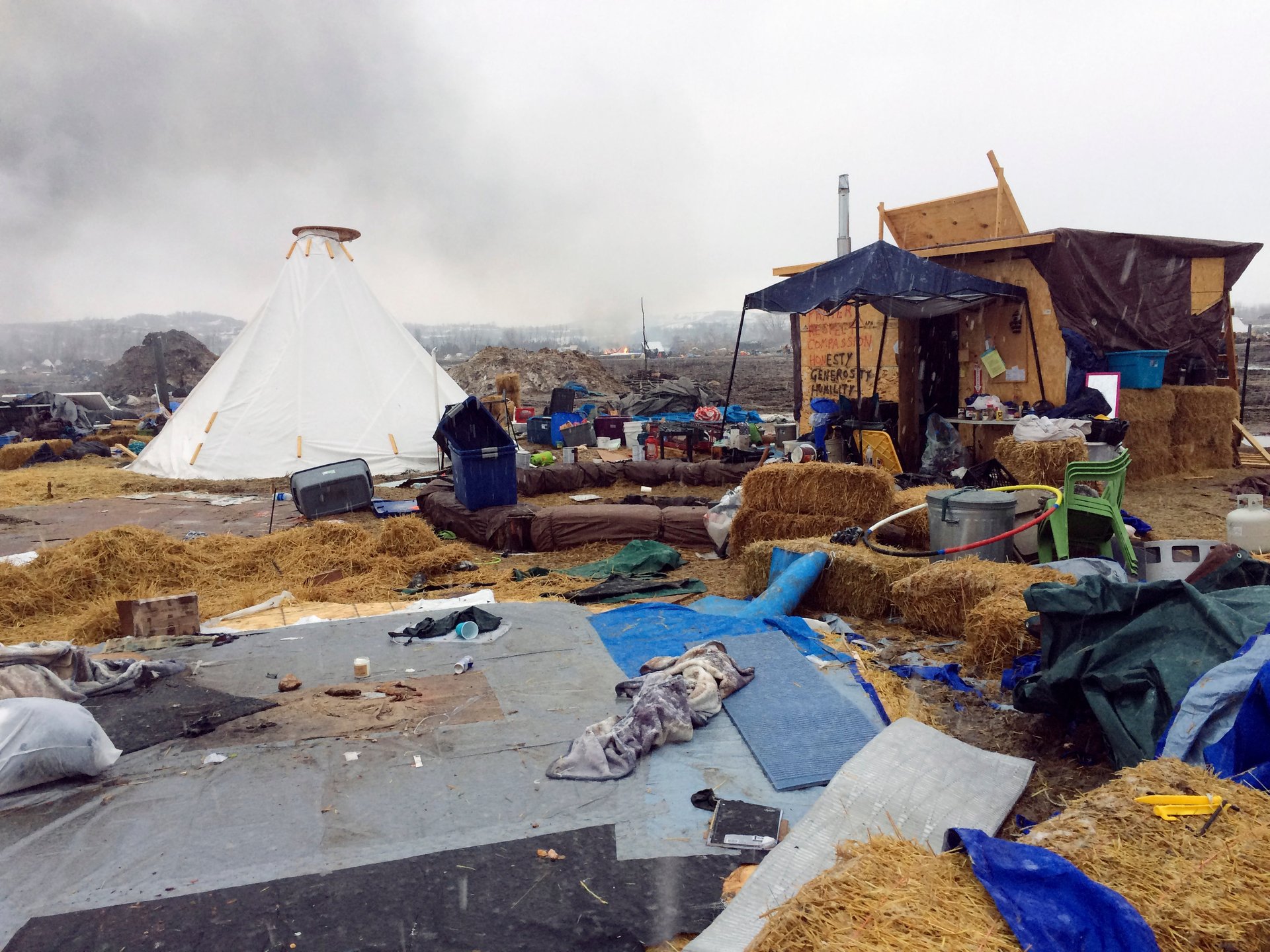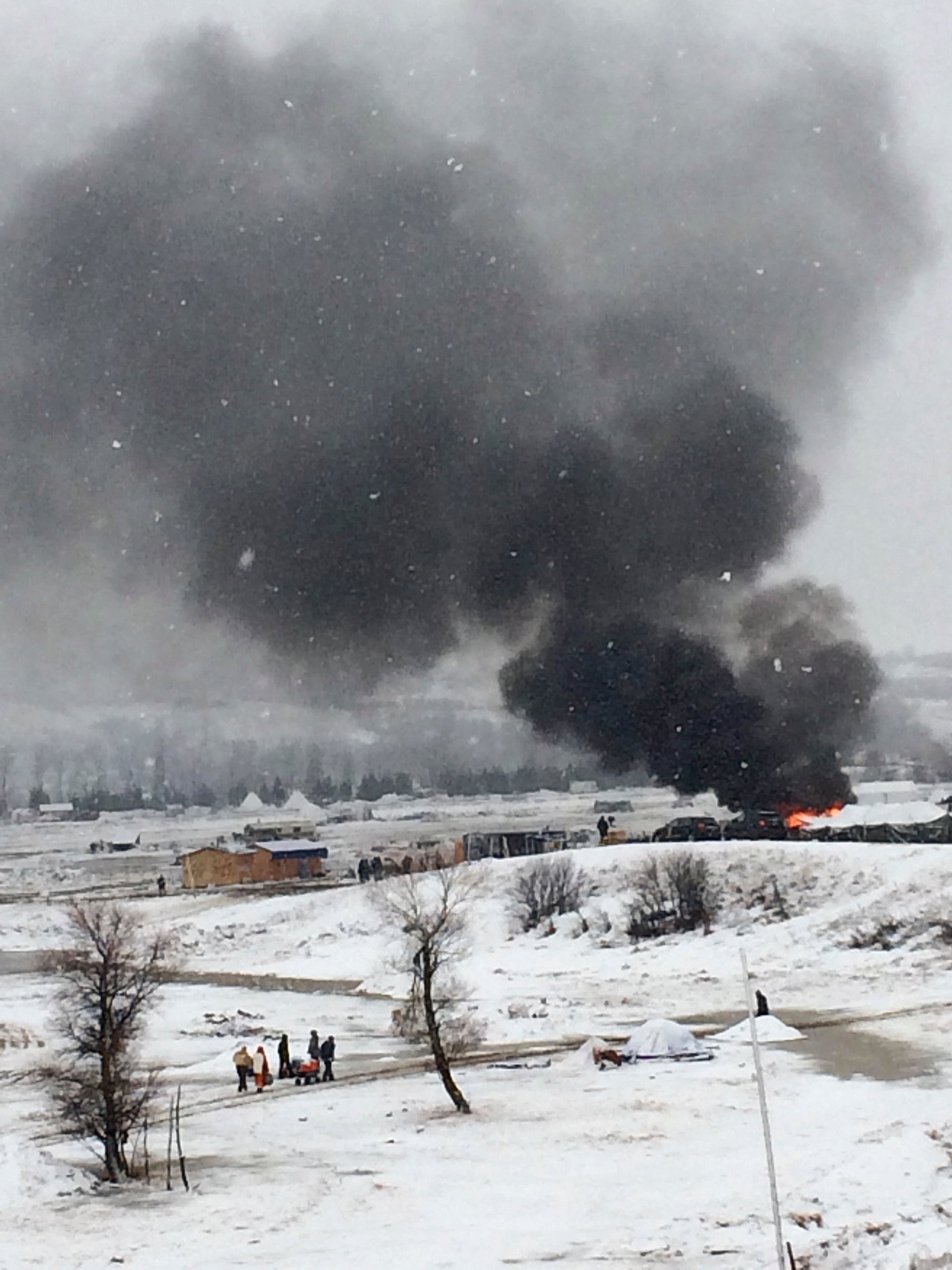At Standing Rock, an opposition encampment goes up in flames as protestors set tents on fire
As the Feb. 22 deadline to clear the protest site at Standing Rock, North Dakota, approached, flames engulfed some of the camps.
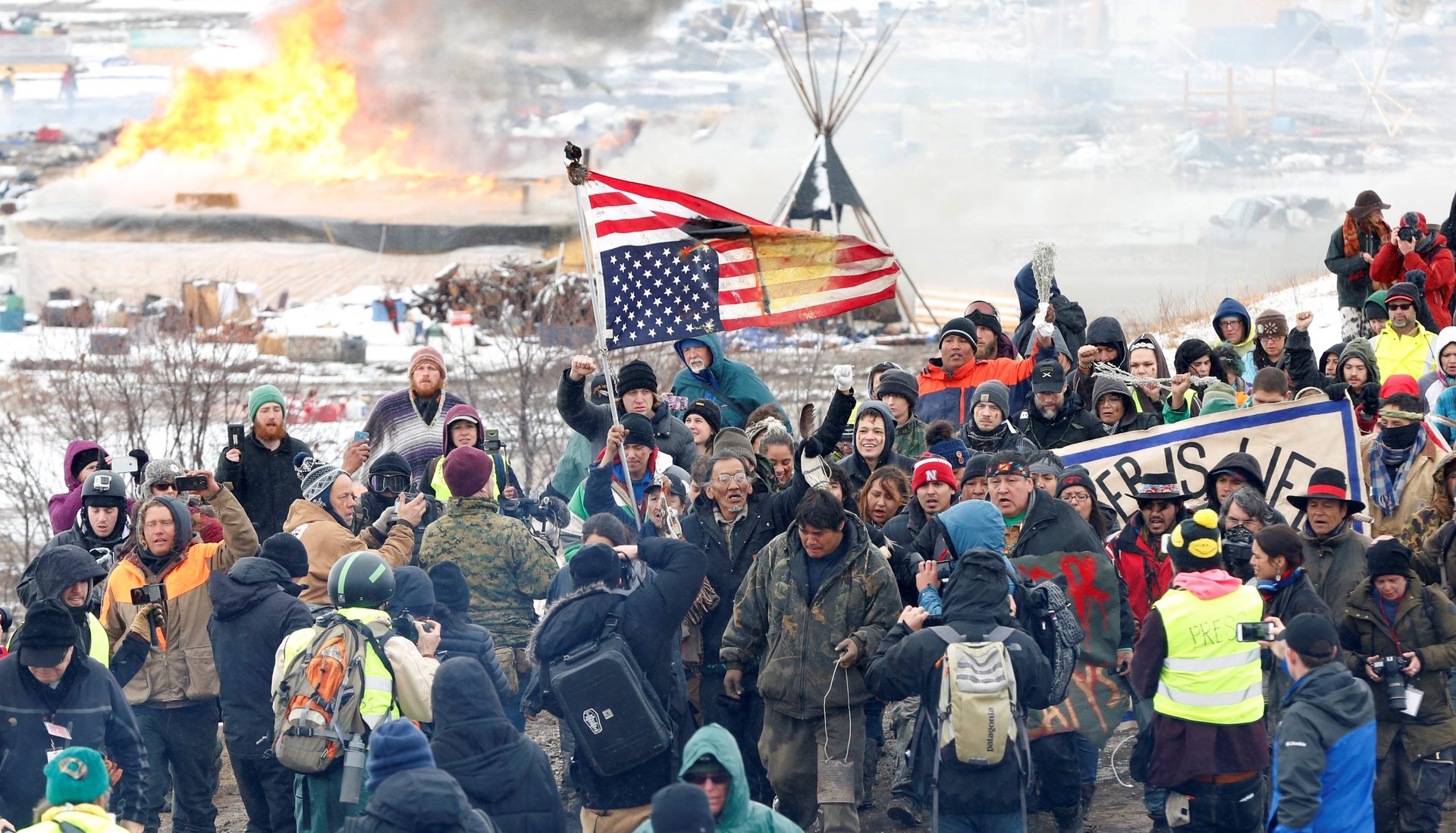

As the Feb. 22 deadline to clear the protest site at Standing Rock, North Dakota, approached, flames engulfed some of the camps.
Protestors set them on fire, CNN reports. Over 100 protestors had voluntarily left the site before the deadline expired at 2pm yesterday, but police arrested at least 10 people early today who refused to leave. The emergency evacuation order said the protest site is located in a flood plain, and that campers are at risk as snowmelt accelerates in warmer temperatures.
North Dakota governor Doug Burgum announced that a cleanup was scheduled to start today at 9am. An estimated 25 to 50 protestors were still holding out as of this morning, but Burgum said they are free to leave voluntarily and take their belongings, as long as they do not interfere with the cleanup.
The pipeline protests began in April of 2016, and at their height in December they gathered as many as 5,000 to 10,000 protesters, rallying against plans to route the Dakota Access Pipeline under a lake near a tribal reservation. Protesters say the project threatens water resources and sacred tribal sites. The evacuation follows US president Donald Trump’s executive order reversing former president Barack Obama’s decision to block construction of the disputed section of the pipeline.
Several tents were set ablaze by protestors as the Wednesday deadline approached. Some tribal members told the CNN that the tents need to be burnt in order to be removed, as they have frozen into the ground. Other members said it was a tribal tradition.
